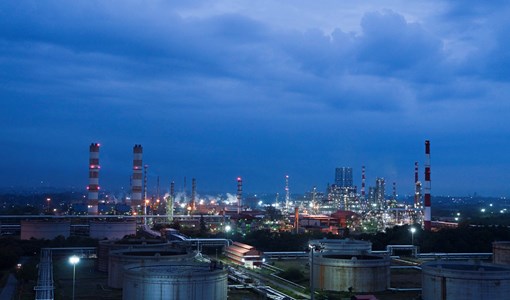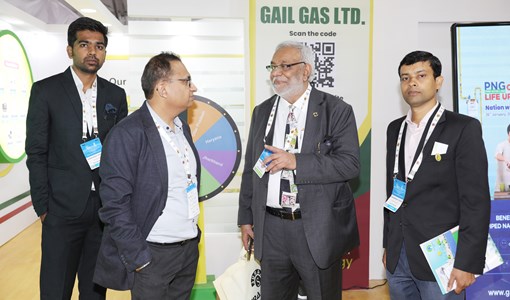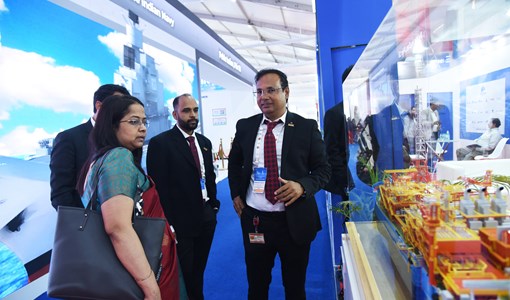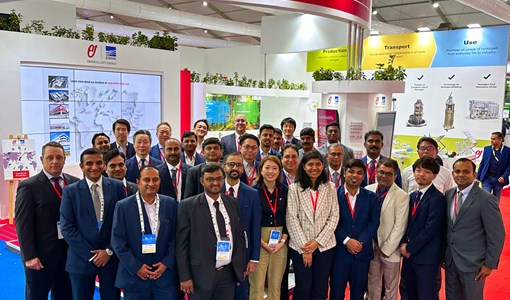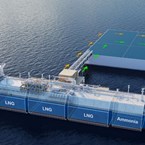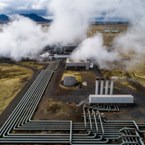Tapping the full potential of Artificial Intelligence
By: Paul Carthy, managing director, Accenture Energy Industry Group, Middle East and Turkey and Barry Walker, senior manager, Accenture Applied Intelligence, Middle East and Turkey
From real-time visualisation of drilling operations to digital replicas of physical assets where companies can build and scale new offerings, the last 18 months have seen key oil and gas players accelerate their investment in artificial intelligence (AI). For the industry, AI has been nothing short of a revolution.
Three consecutive years of lower oil prices and slim margins have created a sense of urgency to improve operational efficiencies across the value chain, from exploration and production through to fuel retailing. And AI is delivering on many of these fronts, from productivity, output and market share, to safety and environmental protection.
Yet, while many oil and gas companies have integrated intelligent technologies into their operations in some way, few have leveraged them in a way that maximises value. In the Middle East, we’ve seen an increased interest in adopting AI solutions and awareness of its role in helping oil companies maximse their efficiencies, upstream, midstream and downstream.
Making the business case for AI
AI may be the single largest transformative force the world has witnessed. But for it to live up to its promise, it must be applied to core processes – and then rapidly scaled.
According to Accenture’s recent Reworking the Revolution research, if all energy companies were to commit to AI and human-machine collaboration to the same degree as the top 20 per cent of performers, revenues could be boosted by more than 50 per cent by 2022, with a corresponding 5 per cent increase in employment levels.
However, scaling requires investment, and while there are plenty of use cases that demonstrate that AI drives value – and quickly – the size of investment required can be a consideration. For oil and gas companies, a clear business case must be the starting point. In this, a digital roadmap and digital services factory – or a ‘virtual’ factory – are indispensable tools to demonstrate how value and scale can be quickly achieved. A leading approach involves an in-depth assessment to identify where AI and digital, in general, can deliver value, taking into consideration the specific needs and constraints of that company, as well as the innovation culture of its employees and a collaborative ecosystem of partners. The next step is then to determine the return on investment based on the total overall value that can be released over the next two to three years using our advanced models based on past experiences. This demonstrates that returns mitigate the cost of investment while transforming the core processes of those companies. With a digital services factory customised to its specific needs, the company can then leverage its connected assets across infrastructure and sites to build and scale new offerings, for example for predictive maintenance, asset monitoring, energy optimisation or health, safety and the environment. In this way, companies set up a sustainable digital and innovation culture and realise value faster, while minimising risks and investment costs.
Redesign core processes
AI is not simply another productivity enhancer. This is not about adding AI “on top” of current investments, or to improve assets that are no longer working optimally. As with digital, AI must be built into core processes and ways of working to transform operations and to ensure organisations can maximise the potential of new waves of technologies.
In the Middle East, interest and investment in advanced analytics and machine learning has been growing rapidly. But while ad-hoc investments will improve existing processes, this is not where AI’s true potential lies. For true value, core processes and roles must be rethought and redesigned, with AI at their core.
Implemented correctly, intelligent technologies are capable of sensing and comprehending the ever-changing physical environment, generating enormous data lakes. Tapping into this data, converting this into action, and implementing systems that continuously learn from those changes and actions is what drives business goals across the value chain. At production sites, for example, intelligent technologies can capture information and images, whether of a corroded pipe, an asset or operator logs – half of which are handwritten – comprehend what the different pieces of information mean both individually and in relation to each other and enable managers to act on the insights. Perhaps more significantly, AI possesses a unique capacity to “learn” and become increasingly reliable over time. So where traditional automation assets degrade over time, AI assets become more valuable. In other words, they are living assets, learning over time to provide better, higher quality insights.
Not to be overlooked are the benefits that go beyond the individual company. AI-powered platforms allow valuable collaboration between ecosystem partners that benefit all parties, specifically in HSE, and potentially across the supply chain.
AI is based on data, and the sharing of non-competitive HSE data provides a larger volume for analysis and more reliable ways of dealing with risks. Supply-chain is another – albeit more difficult area – where collaboration can take place. Being able to collaborate on some elements of the supply chain will inevitably deliver better value to the entire industry, especially when combining AI and blockchain technologies.
A critical time for change
For the region’s oil and gas industry, the time is ripe for AI investment. Beyond the pervasiveness of the internet and the falling costs of hardware and storage, the amount of data enabling AI systems is growing exponentially. Global data has seen a compound annual growth rate (CAGR) of more than 50 per cent since 2010 as more and more devices become connected . Meanwhile, a growing stock of open-source algorithms, software and applications has slashed not just the cost of leveraging the technologies, but also the time to development and value realisation.
At the same time, the industry, fresh from its second downturn in a single decade, has found itself in a radically changed landscape, and one that requires nimble footwork to survive in. While ad-hoc adoption has allowed the industry a glimpse of the AI promise, it has much more to offer. Oil and gas players must rethink their core processes with AI at the centre, and they must be prepared to apply this at scale. Only then will the true promise of AI be realised.
KEEPING THE ENERGY INDUSTRY CONNECTED
Subscribe to our newsletter and get the best of Energy Connects directly to your inbox each week.
By subscribing, you agree to the processing of your personal data by dmg events as described in the Privacy Policy.

Why the energy industry is on the cusp of disruptive reinvention
Mar 12, 2024
Chevron helping drive Egypt’s journey to become Africa’s energy powerhouse
Mar 11, 2024
Energy Workforce helps bridge the gender gap in the industry
Mar 08, 2024
EGYPES Climatech champion on a mission to combat climate change
Mar 04, 2024
Fertiglobe’s sustainability journey
Feb 29, 2024
India’s energy sector presents lucrative opportunities for global companies
Jan 31, 2024
Oil India charts the course to ambitious energy growth
Jan 25, 2024
Maritime sector is stepping up to the challenges of decarbonisation
Jan 08, 2024
COP28: turning transition challenges into clean energy opportunities
Dec 08, 2023
Why 2030 is a pivotal year in the race to net zero
Oct 26, 2023Partner content

Ebara Elliott Energy offers a range of products for a sustainable energy economy

Essar outlines how its CBM contribution is bolstering for India’s energy landscape

Positioning petrochemicals market in the emerging circular economy

Navigating markets and creating significant regional opportunities with Spectrum





